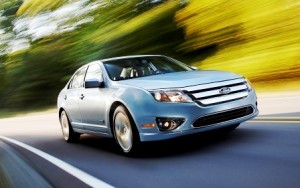We’ve been spending a lot of time, in recent weeks, test-driving a variety of new electric vehicles, and it doesn’t take long to realize how even the most minor things can impact your range – the battery equivalent of fuel economy.
Sure, you don’t have to worry about turning on your heater in a conventionally-powered automobile, something that can cut range by as much as half in a battery car during a cold Michigan winter. But our sojourns nonetheless underscored how simple driving behaviors, like lightening our admittedly leaden foot, can significantly improve energy efficiency, whether you’re driving on gas, diesel, battery or, for that matter, any other form of power.
So, as we head into the cold season, here are an assortment of ways to improve your mileage, or range. Yes, a few of these tips will require spending a couple bucks, but the payoff will be almost immediate – and often will deliver improved performance as well as increased fuel economy.
Some of the easiest ways to improve mileage simply require you to think about how you’re driving:
- Don’t slam the throttle when you take off from a stoplight. That brief momentum of victory over the kid in the next lane will translate into defeat when you have to pay more at the pump;
- If you’ve got a natural lead foot, odds are that you’re more likely to blip the throttle while driving. Don’t be so impatient and, when possible, use cruise control to smooth out your use of the accelerator. It’ll save more fuel than you realize;
- The exception is when you’re on hilly terrain, when cruise is likely to constantly kick in and out and actually lower your fuel economy, note our friends at AutoMD.com;
- You’ll pay the equivalent of 24 cents more per gallon through lower mileage for every 5 mph you drive above 60 miles per hour;
- And though it might seem counter-intuitive, don’t keep your engine idling more than 30 seconds. Stuck in the drive-up line at a fast food restaurant or bank, idling not only wastes gas but pours out emissions. Unless it’s really, really cold and your car hasn’t had time to warm up, you’re better off shutting down the engine, even for a brief wait.
We all try to take care of our health, and maintaining your car is a good idea, as well. Not only will it run better and last longer, but you’ll likely reduce emissions and improve mileage. And, best of all, not all these tips will cost anything:
- One of the fastest ways to waste gas is to let the air pressure in your tires fall below recommended levels. Simply checking the manual – or the decal normally posted on the inside pillar of the driver’s door – and keeping your tires properly inflated can improve mileage by as much as 10%. Better yet, that’ll improve handling and safety, too;
- Make sure your gas cap is tight. How often do you see someone pull out of a gas station with the filler door open? Or even drive with a missing cap? Not only do you risk contaminating your fuel tank and increasing evaporative emissions, but you could waste up to 2% of your fuel economy;
- Follow the manufacturer’s recommendation for changing oil, which will not only help you maximize the life of the engine but improve fuel efficiency. If you live in particularly cold or hot climates, make sure you use the right oil viscosity, as well;
- Don’t skip the tune-ups. Sure, you may be tight on cash, but simple steps like replacing worn plugs and filters can quickly pay off in the form of improved mileage – and lower bills at the pump. A misfiring engine can reduce fuel economy by 30%, and a seriously clogged filter will reduce performance and still add 10% or more to your gas bill – though today’s cars can compensate for a normally-aging filter.
There are other steps you can take to maximize mileage. When you’re ready to replace worn tires, check carefully to see if there are more efficient alternatives. Most makers now will recommend low-rolling-resistance tires that can boost mileage by as much as 10%.
As we noted earlier, using the electric heat in a battery car will have an immediate and potentially severe impact on range. There’s less of an impact with a regular vehicle, though your air conditioner will suck power – and mileage – especially if it’s on full force. Consider using your car’s economy mode, which simply blows in outside air.
But opening the windows isn’t always a good idea. Especially when driving at highway speeds, that can seriously impact your car’s aerodynamics and actually reduce fuel efficiency more than the air conditioner would.
Weight is another enemy of good mileage. The old rule of thumb is that every extra 100 pounds reduces fuel efficiency by roughly 1 mpg.
But while you’re taking steps to improve your fuel economy, avoid some other mileage misconceptions:
- Skip the aftermarket additives and those miracle mileage cures you see advertised late at night. They don’t work;
- Skip the premium fuel. If your car is rated at 89 octane, that’s all it needs. Opting for 91 is simply throwing away your money;
- Don’t waste time warming up your car. No, don’t drive like you’re on a race track the moment you start up, especially on a cold winter morning, but there’s no advantage to sitting in your driveway, either.
Some simple steps are all you need to ensure that you’ll always get maximum mileage and performance – and minimize emissions.

